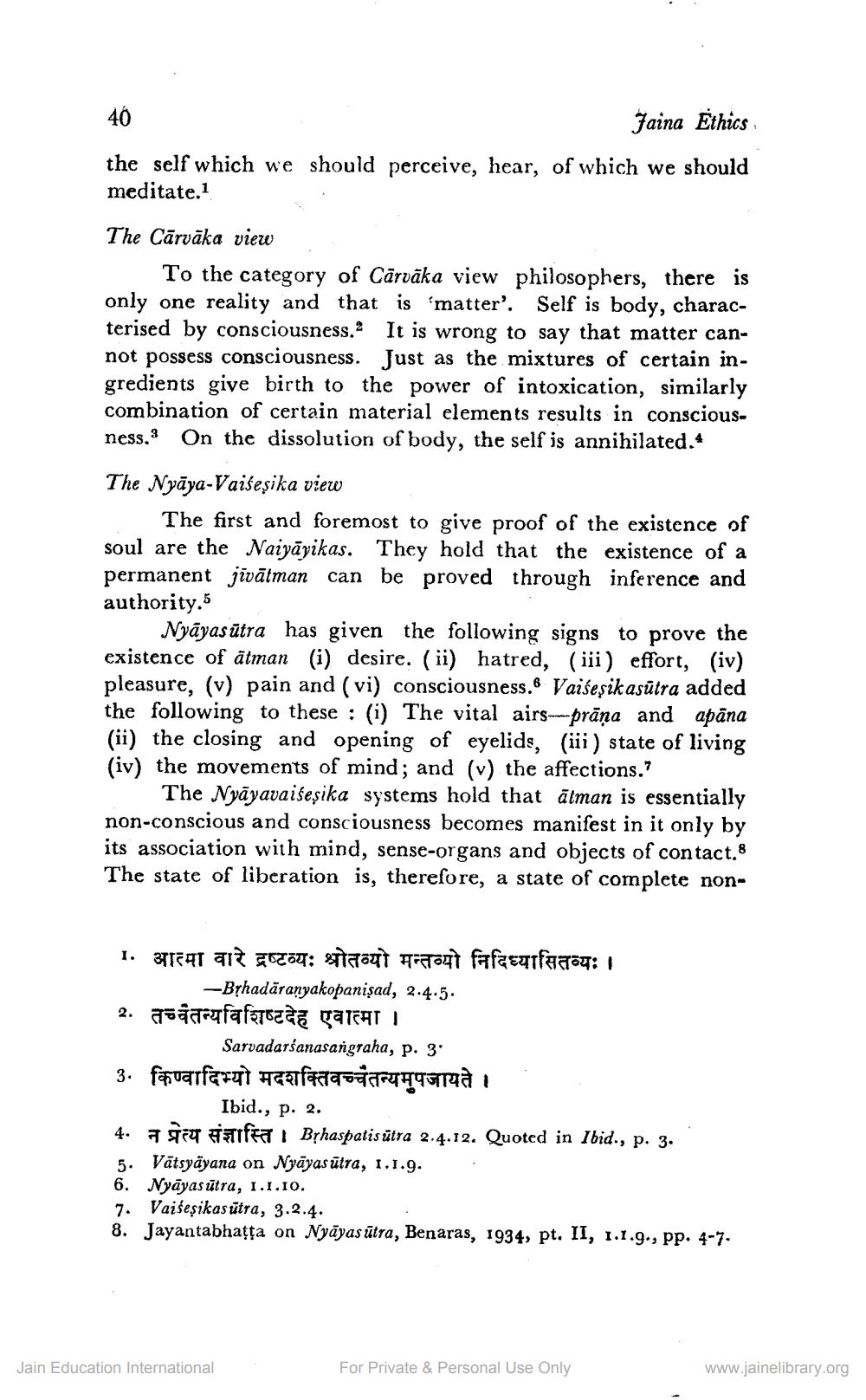________________
40
Faina Ethics the self which we should perceive, hear, of which we should meditate. 1
The Cārvāka view
To the category of Cārvāka view philosophers, there is only one reality and that is ‘matter'. Self is body, characterised by consciousness. It is wrong to say that matter cannot possess consciousness. Just as the mixtures of certain ingredients give birth to the power of intoxication, similarly combination of certain material elements results in consciousness. On the dissolution of body, the self is annihilated. The Nyāya-Vaiseșika view
The first and foremost to give proof of the existence of soul are the Naiyāyikas. They hold that the existence of a permanent jīvātman can be proved through inference and authority.5
Nyāyasūtra has given the following signs to prove the existence of ātman (i) desire. (ii) hatred, (iii) effort, (iv) pleasure, (v) pain and (vi) consciousness. Vaiseșikasūtra added the following to these : (i) The vital airs----prāna and apāna (ii) the closing and opening of eyelids, (iii) state of living (iv) the movements of mind; and (v) the affections.?
The Nyāyavaiseșika systems hold that ātman is essentially non-conscious and consciousness becomes manifest in it only by its association with mind, sense-organs and objects of contact. 8 The state of liberation is, therefore, a state of complete non
I. आत्मा वारे द्रष्टव्यः श्रोतव्यो मन्तव्यो निदिध्यासितव्यः ।
-Byhadăranyakopanişad, 2.4.5. 2. gaarufalatozaa Catari
Sarvadarśanasangraha, p. 3. 3. किण्वादिभ्यो मदशक्तिवच्चैतन्यमुपजायते।
Ibid., p. 2. 4. Seat STIFT I Brhaspatisütra 2.4.12. Quoted in Ibid., p. 3. 5. Vätsyäyana on Nyāyasutra, 1.1.9. 6. Nyāyasūtra, 1.1.10. 7. Vaiseșikasūtra, 3.2.4. 8. Jayantabhatta on Nyāyas ātra, Benaras, 1934, pt. II, 1.1.9., pp. 4-7.
Jain Education International
For Private & Personal Use Only
www.jainelibrary.org




